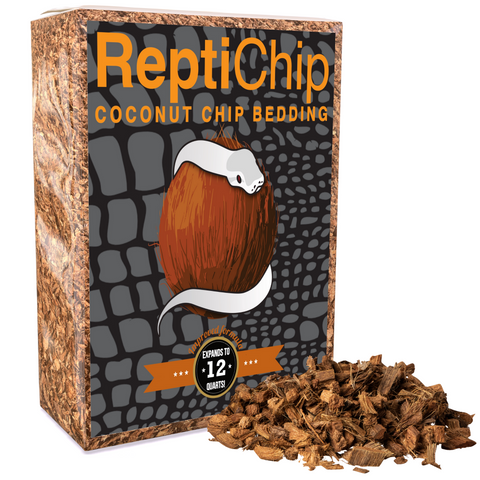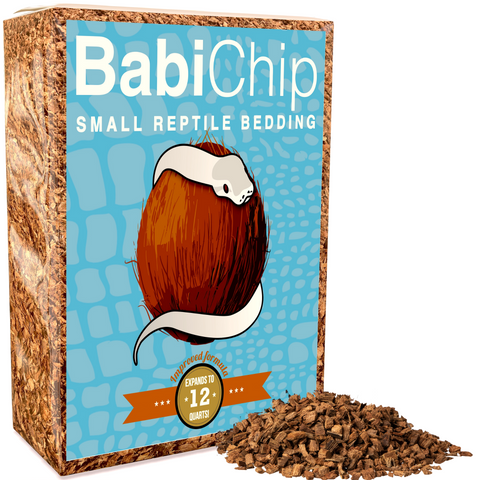Natural History
The Amazon tree boa inhabits the lowland rainforests of the Amazon Basin, thriving in warm, humid environments with dense vegetation. These snakes are non-venomous, highly arboreal constrictors renowned for their slender build, prehensile tails, and striking coloration patterns, which can range from muted browns and grays to vibrant oranges, yellows, and reds. Their physical diversity is matched by a life cycle attuned to the complex rhythms of the rainforest. Amazon tree boas are ovoviviparous, meaning they give birth to live young rather than laying eggs. A typical litter consists of 5 to 20 neonates, though larger litters exceeding 25 have been recorded in ideal conditions. The gestation period lasts approximately 5 to 8 months, depending on temperature and environmental factors. At birth, hatchlings are around 12 to 18 inches in length and immediately independent, receiving no parental care after birth. Growth is most rapid during the first two years of life, with individuals typically reaching sexual maturity between 3 and 4 years of age. Adults commonly attain lengths between 5 and 6 feet, though some may exceed 7 feet. In the wild, their lifespan averages around 10 to 15 years, while well-managed captive specimens can live up to 20 years or more.
Behaviorally, the Amazon tree boa is solitary and predominantly nocturnal, emerging from its daytime refuges high up in the forest canopy to hunt under the cover of darkness. Like many arboreal snakes, it relies heavily on its prehensile tail for stability and movement among tree branches. While primarily an ambush predator, it may engage in active foraging at night, especially during periods of high prey availability. Its diet in the wild consists of small mammals, birds, frogs, and lizards, which it detects through a combination of visual cues and highly sensitive thermoreceptive pits located on its upper lip. These pits allow the boa to detect the body heat of endothermic prey, a critical adaptation for nocturnal hunting. Though generally reclusive, they may exhibit defensive behaviors when threatened, including body inflation, hissing, striking, and displaying an open mouth. They tend to be highly temperamental, especially in the wild or when newly acquired, though some individuals may tolerate limited handling in captivity. Unlike many snake species, Amazon tree boas do not engage in significant social interactions outside of mating encounters and tend to be highly territorial, with juveniles and adults occupying distinct niches in the arboreal landscape to avoid competition.
In the broader ecosystem, the Amazon tree boa plays an important ecological role as both predator and prey. By feeding on a variety of vertebrate species, it helps regulate populations of small mammals and birds, contributing to the overall health and balance of the rainforest ecosystem. In turn, it is preyed upon by larger arboreal predators, including birds of prey like hawks and owls, and occasionally by larger snakes and carnivorous mammals. Its cryptic coloration not only provides camouflage among the foliage but also serves as a defense against these predators. Some individuals display high-contrast coloration that may act as disruptive camouflage or function in aposematic signaling, discouraging potential threats. Its ability to thrive in a wide range of microhabitats—from canopy to understory—illustrates the boa’s adaptability and resilience in one of the world’s most biodiverse regions. Despite being a species with few known natural predators, it faces threats from habitat destruction and the pet trade, which can impact local population dynamics. As such, it serves as both a keystone predator and an indicator species, reflecting the health of the rainforest environments it inhabits. Understanding their biology and behavior in the wild is critical for replicating suitable conditions in captivity and ensuring the well-being of individuals kept by responsible reptile keepers.
Conservation Status
The Amazon Tree Boa is currently classified as “Least Concern” on the IUCN Red List. This status indicates that the species is relatively widespread and abundant in its native range and is not presently at immediate risk of extinction. The classification reflects that the Amazon Tree Boa maintains stable population levels across much of its distribution, which stretches throughout the Amazon Basin, including parts of Brazil, Peru, Colombia, Ecuador, Venezuela, and the Guianas. As an adaptable species capable of inhabiting a variety of forested environments, including primary rainforest as well as secondary growth and agricultural edges, it shows resilience in the face of moderate habitat changes. However, while the species’ current population health is considered stable, localized declines and future threats could still pose significant risks if conditions change dramatically.
Despite its broad geographic distribution and adaptable nature, the Amazon Tree Boa faces a number of ecological threats that could potentially influence its long-term survival. The primary threat to its population is habitat destruction due to deforestation, especially in the Amazon rainforest, where increasing rates of agricultural expansion, cattle ranching, and infrastructure development are reducing and fragmenting its natural habitat. This fragmentation disrupts movement and breeding activities and may isolate populations, leading to reduced genetic diversity over time. Climate change is another growing concern, as shifts in temperature and rainfall patterns could alter forest structure and prey availability, further stressing populations.
Poaching and collection for the exotic pet trade also impact some regional populations. Amazon Tree Boas are sought for their impressive coloration and diverse patterns, which vary widely between individuals. While the species is not currently under severe pressure from commercial collection, unsustainable harvesting in certain areas can threaten local population stability. Furthermore, increased contact with human activity raises the risk of road mortality and conflict-related deaths, as tree boas may be killed out of fear or misunderstanding.
Conservation efforts for the Amazon Tree Boa are multifaceted, although direct, species-specific programs are relatively limited due to its current Least Concern status. Nonetheless, the species benefits indirectly from broader conservation strategies aimed at preserving Amazonian biodiversity. Protected areas such as national parks, indigenous reserves, and sustainable-use conservation units provide crucial habitat refuges where the species is shielded from the worst effects of deforestation and habitat conversion. Additionally, international agreements and enforcement of anti-poaching regulations contribute to the species’ protection.
Captive breeding programs for the Amazon Tree Boa are well-established within zoological institutions and by private herpetoculturists. Although these programs are primarily focused on education and the exotic pet trade rather than reintroduction, they play a valuable role in reducing pressure on wild populations by decreasing the demand for wild-caught individuals. Successful husbandry in captivity also contributes to preservation of genetic diversity, which could theoretically support future conservation or rewilding initiatives if wild populations were ever to decline significantly.
In summary, while the Amazon Tree Boa is not immediately threatened on a global scale, continued monitoring and conservation of its habitat remain essential. As habitat loss and climate change advance, even resilient species like the Amazon Tree Boa could face mounting challenges. Understanding its ecological role, protecting its environment, and promoting responsible captive care and breeding are all key components in ensuring the species’ long-term survival in both the wild and in captivity.
Native Range
The Amazon Tree Boa is native to the neotropical regions of South America, where it exhibits a relatively broad geographic range across the Amazon Basin. This species is distributed throughout northern South America, including countries such as Brazil, Peru, Colombia, Ecuador, Venezuela, Guyana, Suriname, and parts of Bolivia. It is especially common in the central and western Amazon Basin but may occasionally be found in areas extending into the Guiana Shield and the upper reaches of the Orinoco River system. Despite this wide distribution, the species is most prevalent in regions with dense, uninterrupted forest cover and high yearly rainfall, which support the ecological conditions essential to its survival.
At the macrohabitat level, the Amazon Tree Boa inhabits tropical lowland rainforests, which are characterized by high biodiversity, substantial canopy cover, and relatively stable year-round temperatures. The biome is known for its stratified vegetation structure, ranging from the forest floor to the high canopy, providing a vertically diverse habitat. These snakes are predominantly arboreal and are most often encountered in the understory and lower levels of the forest canopy, particularly in areas with dense vine networks and overlapping branches. Although primarily tree-dwelling, individuals occasionally descend to the ground to forage or during the wet season when movement between trees becomes easier due to inundated forest floors.
On a microhabitat scale, the species shows strong preferences for environments with ample vertical structure. They are commonly found coiled on low branches, within dense foliage, and among epiphytic plants such as bromeliads. These microhabitats provide shelter, regulate humidity, and support prey populations, including small rodents, birds, amphibians, and lizards. During daylight hours, individuals often remain motionless in camouflaged positions, relying on cryptic coloration to avoid predators. At night, they become more active, patrolling their territory using a combination of visual and chemical cues to locate prey.
Climatic preferences for the species align closely with the conditions typical of equatorial rainforests. Ambient daytime temperatures range between 78°F and 88°F, with nighttime lows rarely dropping below 72°F. The forest floor maintains high humidity levels, often exceeding 80%, with even higher local humidity in the canopy and immediate microhabitats used by the species. Annual rainfall is abundant, averaging between 80 and 150 inches per year, typically distributed relatively evenly throughout the year, though slight seasonal fluctuations occur. There is often a marked rainy season and a marginally drier season, though significant drops in humidity or precipitation are rare. Seasonal shifts may influence the boa’s reproductive timing and patterns of movement, with some individuals ranging more widely during wetter periods.
Elevation-wise, the Amazon Tree Boa is generally restricted to lowland tropical forests, typically occurring at elevations below 1,500 feet. These lowland zones offer stable thermal and moisture conditions that are essential for effective thermoregulation, skin shedding, and reproductive activity. Although rarely found in mid-elevation transitions up to 3,000 feet, it is notably absent from highland forests and mountainous areas where temperatures are too cool and forest structure less suitable for an arboreal lifestyle.
Key environmental factors critical for this boa’s survival include the presence of year-round water sources—such as rivers, oxbow lakes, and permanent rainwater pools—which support the prey base and maintain microclimatic humidity. Dense vegetation, particularly in riparian zones, also provides essential concealment and hunting platforms. The species benefits from complex terrain that includes large fallen logs, tangled vines, and tree hollows, which serve as both ambush sites and shelter. It is especially associated with areas that feature high vertical connectivity in forest structure, allowing free movement between branches without necessitating ground travel, thus reducing exposure to terrestrial predators.
In summary, the Amazon Tree Boa is a specialized inhabitant of lowland Amazonian rainforests, thriving in warm, humid, and structurally complex environments. Its ability to exploit the vertical dimension of tropical forest ecosystems, coupled with its nocturnal and cryptic nature, makes it well adapted to the unique challenges of its native range. Understanding these specific habitat associations is critical for replicating appropriate environmental conditions in captive settings.
Behavior
The Amazon Tree Boa is a primarily nocturnal species, exhibiting peak activity after dusk when the ambient temperatures drop and humidity levels rise. In its native range throughout the Amazon Basin, this snake takes advantage of the cooling twilight hours to hunt and move through the arboreal canopy. While mostly nocturnal, some individuals may exhibit limited crepuscular behavior, especially during overcast days or in shaded, denser forest interiors. In captivity, this species generally retains its nocturnal tendencies but may shift activity patterns slightly due to artificial lighting cycles and human schedules. Seasonal behaviors in the wild include increased activity and feeding during the wet season, which correlates with greater prey availability. During cooler months or dry periods, some Amazon Tree Boas may reduce activity, though they do not undergo true brumation.
Socially, the Amazon Tree Boa is a solitary and non-gregarious species. Individuals typically maintain their own territories and avoid one another outside the breeding season. There is no evidence of social structures or dominance hierarchies, although males may engage in low-level combat or competitive behavior when pursuing a receptive female. Courtship involves tongue-flicking, alignment of bodies, and muscular stimulation. Copulation may last several hours. There is no parental care post-ovulation; the species is ovoviviparous, with females giving birth to live young, typically in higher humidity conditions that simulate those of the rainy season.
This species exhibits acute sensitivity to changes in environmental conditions. Temperature fluctuations influence their activity levels, with ideal active temperatures ranging between 78–85°F. When basking opportunities are limited, such as in overcast weather, they may thermoregulate behaviorally by climbing to more exposed or sunlit branches or retreating to cooler, shaded spots. In captive settings, disruptions to photoperiod or humidity—such as from improper misting schedules—can lead to noticeable behavioral stress, including refusal to feed or prolonged periods of inactivity.
In both the wild and captivity, Amazon Tree Boas are highly responsive to visual and chemical cues. Their infrared-sensitive pits enable them to detect heat signatures from endothermic prey, typically small birds, lizards, and rodents. Their strong chemosensory capabilities, derived from tongue-flicking and Jacobson’s organ analysis, also help them locate prey and assess potential predators. When approached by a perceived threat, the species displays a well-documented defensive temperament: individuals often strike repeatedly and may posture with an elevated S-coil, a typical position for arboreal ambush predators. Unlike some snake species that rely on camouflage alone, the Amazon Tree Boa is known for bold defensive behaviors, especially in younger or wild-caught individuals. Over time in captivity, some specimens may become calmer, though this is highly individual.
One of the most distinctive behavioral traits of the Amazon Tree Boa is its ambush-based predation strategy. Perched in arboreal settings with the body coiled along branches, it strikes explosively and precisely when prey is detected, using a powerful prehensile tail for balance and leverage. Its remarkable flexibility and prehensile tail also contribute to its graceful and controlled arboreal locomotion. The species often employs slow, deliberate movements to avoid detection, both when stalking prey and avoiding threats.
In captivity, notable behavioral changes often include a decrease in roaming and hunting behaviors due to consistent prey availability and limited space. This may lead to reduced physical activity unless proper vertical space and enrichment are provided. Feeding responses often remain strong, although captive specimens may exhibit food targeting issues with increased human interaction. Some individuals may become less reactive to stimuli over time, particularly in low-stress environments, while others retain a naturally defensive demeanor throughout their lifespan. Enrichment strategies such as varying branch placement, adjusting humidity gradients, and providing live or scent-marked enrichment items can help evoke naturalistic behaviors and reduce captivity-related stress.
Captivity Requirements
Enclosure Design
Amazon Tree Boas are highly arboreal snakes native to the dense, humid rainforests of South America. As such, enclosure design must prioritize vertical space, security, and environmental complexity. For juveniles up to approximately 2.5 feet in length, a minimum enclosure size of 18" long by 18" deep by 24" tallis acceptable. However, this should be considered temporary housing. Once the boa reaches adulthood—typically between 5 to 6 feet in length—its enclosure must be upgraded. Adult Amazon Tree Boas require a minimum enclosure size of 48 inches long by 24 inches wide and 24 inches tall to allow ample climbing opportunities and environmental enrichment. Larger enclosures are preferred, provided they maintain appropriate thermal and humidity gradients.
Recommended materials for the enclosure include high-quality PVC or melamine panels that offer good insulation, resist humidity-related damage, and are easy to clean. Glass enclosures may be used if adequately ventilated, but they often struggle with heat retention and humidity regulation. Ventilation should be cross-flow, with vents positioned low and high on opposing sides to support air exchange without drying out the enclosure.
Given the Amazon Tree Boa’s arboreal nature, vertical layout is vital. The enclosure should be densely furnished with a variety of climbing structures, such as cork bark tubes, secured branches, vines, and natural wood. These elements should be anchored safely and positioned at multiple levels to facilitate climbing and perching. Provide at least two secure hides: one on the ground level and one elevated, as this species prefers to feel hidden while resting. A designated basking area should be placed on an upper branch or ledge beneath the heat source, allowing the snake to thermoregulate by moving between warmer and cooler zones. Enclosures must feature secure locking mechanisms and tight-fitting doors or lids to prevent escape, as this species is agile and possesses excellent climbing skills.
Lighting and Heating
Amazon Tree Boas require a carefully controlled thermal gradient to support digestion, metabolism, and immune function. The basking area should maintain temperatures between 88°F and 92°F. Ambient temperatures across the enclosure should range from 78°F to 82°F during the daytime. Nighttime temperatures may safely drop to 70°F to 75°F, mimicking their natural environment. All heating elements, including ceramic heat emitters or radiant heat panels, must be regulated with a high-quality thermostat to prevent overheating. Never use heat rocks, as they pose a serious burn risk to snakes and do not provide adequate thermal regulation.
Though nocturnal, Amazon Tree Boas benefit from UVB exposure. A low-output UVB bulb (2.0% to 7.0%) should be used, mounted no more than 12 inches from basking surfaces and filtered through no glass or plastic. UVB supports bone health by enabling vitamin D₃ synthesis, which assists calcium metabolism. This is particularly important for juveniles and breeding females. UVB bulbs must be replaced every 6 to 12 months based on manufacturer guidelines, regardless of visible output.
A consistent photoperiod is essential for maintaining circadian rhythms. A 12-hour light and 12-hour dark cycle aligns with natural tropical daylight patterns. Seasonal adjustments to photoperiod are generally unnecessary for this equatorial species, but slight variations (10 to 14 hours of light) may be employed to mimic subtle seasonal cues. Always ensure that lighting and heating elements are securely mounted and positioned to avoid direct contact and accidental burns.
Substrate and Enrichment
The substrate for Amazon Tree Boas must support humidity retention while providing a clean and safe environment. ReptiChip’s Premium Coconut Chip Mix is an ideal base, offering excellent moisture control and resistance to mold. ReptiEarth can also be included in a 70:30 blend with ReptiChip for added texture and digging potential. Avoid the use of reptile carpet or wood shavings such as pine or cedar, as they can contribute to respiratory irritation or impaction risks.
Enclosure enrichment is critical for the mental and physical health of this active and inquisitive species. Climbing structures, as previously mentioned, should vary in diameter and material to stimulate natural movement and muscle development. Horizontal and diagonal branches allow resting and basking positions at multiple heights, while artificial or live plants offer visual barriers and enhance environmental complexity. Providing multiple hides allows the snake to choose cover based on temperature and light preferences, reducing stress.
Interactive elements, such as rotating branch placements or enriching feeding practices (like suspended or arboreal feeding), encourage foraging behaviors and mental stimulation. Regular environmental changes can reduce stereotypic behaviors and increase exploration. Always ensure climbing structures are stable and do not shift under the animal’s weight. Allowing the boa to perch comfortably above ground level supports its arboreal nature and sense of security.
Humidity and Hydration
Maintaining proper humidity is essential for Amazon Tree Boas, which originate from highly humid equatorial rainforests. The optimal humidity range is 70% to 80%, with periodic peaks up to 90% during shedding cycles. Humidity can be maintained by lightly misting the enclosure once or twice daily, using a fine mist that settles across leaves, branches, and substrate. Automated misting systems or ultrasonic foggers may be employed for consistency, particularly in drier climates.
Substrate choice directly impacts humidity control. ReptiChip and ReptiEarth both retain moisture well without becoming waterlogged, especially when maintained at 2 to 3 inches deep. Adding a moss-filled hide or moisture-retentive areas in the lower third of the enclosure offers microclimates where the boa can regulate humidity exposure voluntarily. High humidity should be balanced with adequate airflow to prevent mold and ensure skin health.
Hydration should be provided via a clean, shallow water bowl large enough for the snake to soak if desired. The bowl should be placed on the enclosure floor in a shaded area to prevent rapid evaporation and bacterial growth. Water should be replaced regularly to avoid contamination. Amazon Tree Boas often prefer to drink water droplets directly from leaves or enclosure surfaces following misting. Observing this behavior helps ensure effective hydration, particularly in juveniles or recently imported specimens. Monitoring should include digital hygrometers placed at both mid-level and upper-level perches to verify accuracy and consistency across the enclosure. Avoid analog gauges, which are often inaccurate and slow to respond.
With proper attention to environmental needs, Amazon Tree Boas can adapt well to captive conditions. Their care requires diligence and attention to detail but rewards keepers with a striking, active display reptile that exhibits a fascinating range of natural behaviors.
Diet & Supplementation
The Amazon Tree Boa is a carnivorous, arboreal snake with a diet that varies according to age, size, and seasonal conditions. In its natural rainforest habitat, this species preys primarily on a variety of small vertebrates. Juvenile tree boas typically feed on smaller prey such as frogs, lizards, and small birds, while adults expand their diet to include larger avian species, rodents, and occasionally bats. Feeding behavior is influenced by the snake's climbing abilities and the biodiversity of its environment, allowing it to exploit a variety of prey items that inhabit both the forest canopy and the understory.
This species is an ambush predator, relying heavily on stillness and camouflage to allow unsuspecting prey to approach within striking range. Once close enough, the boa strikes quickly with its teeth to grip the prey, then uses constriction to subdue it. Though non-venomous, the muscular coils of the Amazon Tree Boa are highly effective for incapacitating and killing prey before ingestion. It possesses heat-sensing pits along its upper lip, which allow it to detect infrared radiation emitted by endothermic animals. This adaptation is particularly useful at night, when the boa is most active, enabling it to locate birds and mammals in low-light conditions. Chemical cues, received through the Jacobson’s organ (vomeronasal system), also play an important role in prey detection. Visual tracking is used as well but plays a secondary role compared to infrared and chemical sensing.
Seasonal variation can affect the feeding behavior and diet composition of Amazon Tree Boas in the wild. During wetter months, amphibians may comprise a larger portion of the diet due to their increased availability. Similarly, periods of reduced prey abundance may lead to irregular feeding intervals, with boas sometimes going weeks without food. Juveniles require more frequent meals due to their high metabolic rate, often feeding every 5 to 7 days, while adults may only consume a meal every 14 to 21 days. These intervals can be influenced by temperature, humidity, prey availability, and the physiological condition of the snake, such as during breeding or shedding cycles.
In captivity, replicating the natural diet of the Amazon Tree Boa can be challenging but is essential for long-term health. Prey items typically consist of appropriately sized rodents such as mice and young rats. These should be offered pre-killed to prevent injury to the snake, although some individuals may only accept live prey, especially when first introduced to captivity. Nutritional balance is best achieved by offering prey that is whole, as it contains necessary organs and bones that support overall health. However, because captive diets lack the variety seen in the wild, vitamin and mineral supplementation—especially calcium—should be considered, particularly for juveniles or breeding females. Prey items may also be dusted or gut-loaded if using feeder lizards or amphibians as dietary enrichment.
Feeding challenges in captivity are not uncommon with this species. Some Amazon Tree Boas may refuse food due to stress, improper temperatures, shedding, or unfamiliar prey types. It is essential to maintain proper thermal gradients (ranging from 78°F on the cool side to 88°F on the warm side, with a nighttime drop no lower than 75°F) to support normal digestion and appetite. Enclosure enrichment such as the use of elevated perches, dim lighting to simulate nocturnal conditions, and scent markers can encourage more natural feeding behaviors. Obesity can also be an issue in captivity due to overfeeding or lack of exercise. Feeding intervals should be closely monitored—juveniles should be fed every 5 to 7 days, while adults thrive on a schedule of every 10 to 21 days depending on body condition and activity level.
Maintaining dietary variety within captive constraints is key to promoting mental stimulation and nutritional health. Offering different prey species such as chicks, quail, or amphibians can be beneficial, though every new item should be verified as safe and parasite-free. Feeding issues like reluctance to switch from live to pre-killed prey can be addressed through scenting techniques or "teasing" methods where prey is wiggled slightly to trigger a feeding response. Caretakers should regularly assess body condition and adjust feeding protocols to prevent both undernourishment and excessive weight gain. By closely mirroring the species' natural behaviors and dietary habits, keepers can ensure the Amazon Tree Boa remains healthy and behaviorally enriched in captivity.
Reproduction
Amazon Tree Boas reach reproductive maturity between 2.5 to 4 years of age, depending on their growth rate, which is influenced by diet and overall husbandry. Males typically mature slightly earlier than females. This species exhibits noticeable sexual dimorphism: females are generally larger and more robust, reaching lengths of 5 to 7 feet, while males rarely exceed 5.5 feet and have longer, more slender tails in proportion to their bodies, aiding in reproduction. Mating behaviors are complex and include ritualized behaviors such as tongue flicking, body alignment, and tail wrapping. Courtship usually begins with the male actively seeking out the female, followed by positioning his body alongside hers and using rhythmic movements to stimulate a reproductive response. If receptive, the female will remain stationary while the male aligns and engages in copulation, which can last several hours.
Reproductive activity in Amazon Tree Boas is primarily triggered by environmental factors that mimic seasonal transitions in their native Amazon rainforest habitat. To initiate breeding in captivity, temperature cycling is crucial. In their natural range, the dry season triggers breeding behaviors, and keepers replicate this by lowering nighttime ambient temperatures to 72–75°F for several weeks, while maintaining daytime highs between 82–85°F. Once this cooling period is complete, gradually reintroducing higher night temperatures (76–78°F) and increasing humidity levels to 70–80% simulates the onset of the wet season, which typically stimulates ovulation in females and increased courtship behavior in males. Photoperiod changes—reducing light exposure to 8–10 hours per day during the cooling period and then increasing to 12–14 hours during the simulated wet season—further support seasonal breeding cycles.
Amazon Tree Boas are ovoviviparous, meaning they give birth to live young rather than laying eggs. Copulation must occur during or shortly before ovulation to ensure successful fertilization. Although these snakes are primarily solitary, pairing a compatible male and female in a neutral enclosure during the breeding period often yields better results than introducing one to the other's established territory, which can provoke defensive behaviors. The breeding enclosure should provide adequate vertical space, secure perches, and minimal disturbances. Males may become persistent in their courtship, so it is critical to monitor interactions closely. If the female displays excessive stress or aggression—such as striking or evasive fleeing—the male should be removed and reintroduced at a later time.
Several challenges can impact breeding success in captivity. A common issue is incompatibility between specific individuals, which might manifest as continual rejection or defensive behavior by the female. If this occurs, rotating multiple potential mates may be necessary. Stress-related reproductive failure is another concern, often resulting from excessive handling, improper humidity, or suboptimal enclosure conditions. Maintaining stable environmental parameters and offering visual barriers or secluded perches can help reduce such stress. Additionally, failure to properly simulate seasonal cues, particularly temperature gradients and humidity shifts, often leads to reproductive inactivity. Thorough pre-breeding conditioning, which includes a review of the animal’s health, weight, and environmental readiness, is essential to overcoming these obstacles and supporting a successful reproductive attempt in captivity.
Incubation & Neonate Care
Amazon tree boas are ovoviviparous, meaning they give birth to live young rather than laying eggs. The gestation period for this species ranges from approximately 5 to 8 months, depending on environmental conditions and the health of the female. During the latter stages of gestation, it is crucial to ensure optimal environmental parameters to support embryonic development. The enclosure should maintain a daytime temperature gradient between 78°F and 84°F, with nighttime drops no lower than 74°F. A moderate to high humidity range of 70% to 90% is essential to prevent dehydration of the female and to facilitate the birthing process. A suitable birthing area should be provided, ideally consisting of elevated, secluded branches or a secure hide box lined with slightly damp sphagnum moss or soft substrate. This offers the female a sense of security and reduces stress which may otherwise contribute to birthing complications such as dystocia, where the female is unable to pass the young.
Parturition in Amazon Tree Boas typically occurs during the early morning hours and can last several hours. A single litter can range from 5 to 20 neonates, though numbers may vary based on the female’s age and condition. During the birth, the snakes emerge encased in a thin, transparent membrane which they break through shortly after delivery. Unlike some colubrids or pythons, the Amazon Tree Boa exhibits no parental care post-birth. Once neonates are delivered, they are completely independent. It is not uncommon for retained neonates or unviable offspring to be present post-birth, and keepers should monitor closely for signs of incomplete birthing, as this can pose health risks to the female.
Neonates should be removed from the adult enclosure promptly after birth to prevent stress and possible defensive behavior from either the neonates or the adult female. Each neonate should be housed individually in a secure ventilated container with ample hiding places and small perching structures, replicating their arboreal nature. The enclosure should be maintained at a temperature of 80°F to 84°F during the day, with nighttime lows around 75°F. Humidity should remain between 75% and 85% to support proper skin health and hydration, especially as they approach their first shed cycle, typically occurring within 7 to 10 days after birth.
Feeding should commence shortly after the first shed. Neonates are capable of consuming appropriately sized prey, such as pinky mice or newborn anoles, depending on individual feeding response and size. Some individuals may refuse food initially and require scenting techniques or live prey stimulation to trigger feeding responses. It is advised to attempt feeding every 5 to 7 days, removing uneaten prey after several hours to prevent stress. Successful feeders should be transitioned gradually to frozen-thawed prey to facilitate long-term captive management.
Hydration is critical for neonates, and misting enclosures lightly once daily often encourages drinking behavior. A small, shallow water dish should also be provided and kept clean. Health concerns in neonates include respiratory infections from improper humidity and thermal gradients, as well as retained sheds due to suboptimal hydration or enclosure conditions. Handling neonates should be kept to a minimum during the first few weeks to prevent undue stress and establish consistent feeding.
Overall, careful monitoring of environmental conditions and individual neonate behavior is key to successful early-stage husbandry. By mimicking the microclimatic and structural conditions of their natural habitat, keepers can greatly enhance neonate survival and development.
Conclusion
Successfully keeping an Amazon Tree Boa in captivity requires a detailed understanding of its natural ecology, behavior, and physiological needs. This arboreal snake, renowned for its vivid coloration and complex habits, demands a husbandry approach that mirrors its tropical rainforest environment. Key elements include a vertically oriented enclosure that offers ample climbing structures and hides, precise control of temperature and humidity gradients, and thoughtful enrichment designed to encourage natural behaviors. Consistent nocturnal routines, appropriate lighting including low-level UVB exposure, and regular misting are essential to maintaining the snake’s health and promoting proper hydration and shedding.
Feeding practices must reflect the snake’s age, size, and activity level, with a strong emphasis on whole-prey items and an awareness of seasonal changes in metabolism and appetite. Neonates require individualized care, particularly during the critical period following birth and first shedding, with close attention given to feeding response and enclosure microclimate. Adult boas benefit from controlled feeding schedules that prevent obesity and ensure continued engagement with their environment. Behavioral monitoring, especially after handling or changes in enclosure setup, helps to identify stress or illness early.
Reproductive management in captivity, while feasible, involves careful conditioning and environmental manipulation to mirror the distinct seasonal cues of the Amazon Basin. Breeding success depends not only on the compatibility of the animals and proper timing but also on close monitoring of the female throughout gestation. Postnatal care must prioritize separation of the neonates, rigorous hygiene, and early intervention when feeding challenges arise.
Conservation awareness also plays an important role in responsible husbandry. While wild populations remain stable, threats such as deforestation and unsustainable collection practices can impact local dynamics. Captive breeding programs help reduce pressure on wild populations and offer opportunities for education and long-term species preservation.
When kept under appropriate conditions by informed and attentive keepers, Amazon Tree Boas can thrive in captivity, exhibiting a wide range of natural behaviors and striking visual displays. They are not a species suitable for beginners due to their defensive tendencies and specific environmental requirements, but with the proper setup and commitment to best practices, these snakes offer a captivating and rewarding experience for the dedicated herpetoculturist.


















